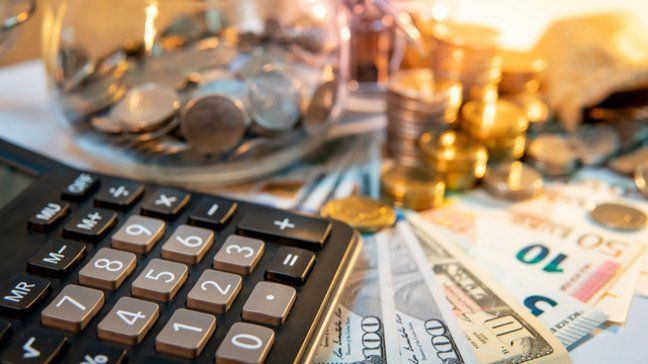Compound interest is the foundation of wealth accumulation, but how does it work?
In the words of Benjamin Franklin: “Money makes money. And the money that makes money makes more money.”
Using our simple Compound Interest Calculator, you can quickly see how regular investments can turn small amounts into large amounts.
Try below:
Compound Interest Calculator
How to use the compound interest calculator
You can use the compound interest calculator to get two important pieces of information about your investments:
- The total value of your investment at the end of the investment period
- How much interest will you earn over the entire investment period
Not only can the calculator give you this information about a particular investment, but you can also use it to compare multiple investments to determine which one would be the best one to choose from.
Here’s how the calculator works and what to enter in each field:
Initial investment
Enter the amount of money you are going to invest or have already invested in your account. This is the starting point for calculating your future investment growth.
Deposit amount
This is the amount of money you want to invest on a regular basis. While the amount you actually invest may vary, this number should be the average of all your periodic deposits over the life of the investment.
For example, if you want to invest $100 per month, enter the number $100.
Deposit base
Enter the frequency of your regular deposits. It can be a year, half year, quarter or month. If you plan to make weekly deposits, simply multiply the deposit amount by 4.333 and set the frequency to monthly.
Interest rate
Enter the annual rate of return you expect from your investment over the life of the investment. For example, the S&P 500 has averaged more than 10% per year over the past 90+ years.
Interest accrues
Enter the compounding frequency that the bank or other financial institution that will hold your investment must provide. The calculator gives you the choice between annual, semi-annual, quarterly, monthly and daily. Most investment income is accrued on an annual basis when calculated.
Number of years
Use the slider to enter the number of years you will hold this particular investment for. You can enter anywhere from one year old to 35 years old.
After entering the required information, click the “Calculate” button.
Total investment cost
This is the total value of your investment based on your initial investment, regular investment plan, and annual interest rate. This includes your contributions and investment growth.
Total Interest Received
This number takes the total cost of the investment at the end of the plan and subtracts your contributions. This is purely the amount of growth your investment has earned.
Investments and compound interest
When you invest, it’s important to note that investment income usually includes any dividends that are paid out on your investment. The rate of return assumes that you reinvest those dividends in order to buy more of the investment you have.
This makes it vital to set up a dividend reinvestment plan (DRIP) in your brokerage or retirement account to take full advantage of compound interest.
And while the calculator assumes the same growth each year, the reality is that the stock market and other investments rarely return the same amount each year. There are ups and downs, but over a longer time horizon (say 30 years) you need to focus on the average rate of return.
If your investment time horizon is much shorter, the calculator’s guesses may be far off. For example, if you invest in the stock market for five years, the return over that period could be negative.
Compound interest can exponentially increase your money, but one of the most important components is time. The more time you allow your money to accumulate, the more wealth you can accumulate.
Read more: Top tips to help you get started investing
How does inflation affect compound interest?
Inflation is a hot topic right now, and for good reason. This undermines our purchasing power and drives up the cost of almost everything.
But how does inflation affect compound interest?
Simply put, inflation reduces your income; tomorrow’s dollars are worth less. If you expect to earn an 8% return on your investment, and inflation increases by 4% annually during that time period, your real rate of return is only 4%.
Although inflation in 2022 is above average, the long-term average inflation rate is around 3% per year. To account for this in your calculations, you can take the expected rate of return and subtract 3% from it to get a more accurate calculation based on today’s purchasing power.
Read more: How to create an inflation-resistant portfolio
Summary
Our Compound Interest Calculator is a powerful tool that will show you investment opportunities over a long period of time. Play around with the calculator to see how different investments will perform, and increase or decrease your deposit amount and frequency to see how it will affect your overall income.
While investing can be a slow process for the first 10 years or so, when you extend your time horizon to 30 years (or more) you will see how compound interest really does the hard work for you. Building wealth takes time, but consistently investing in high quality assets can get you there.


